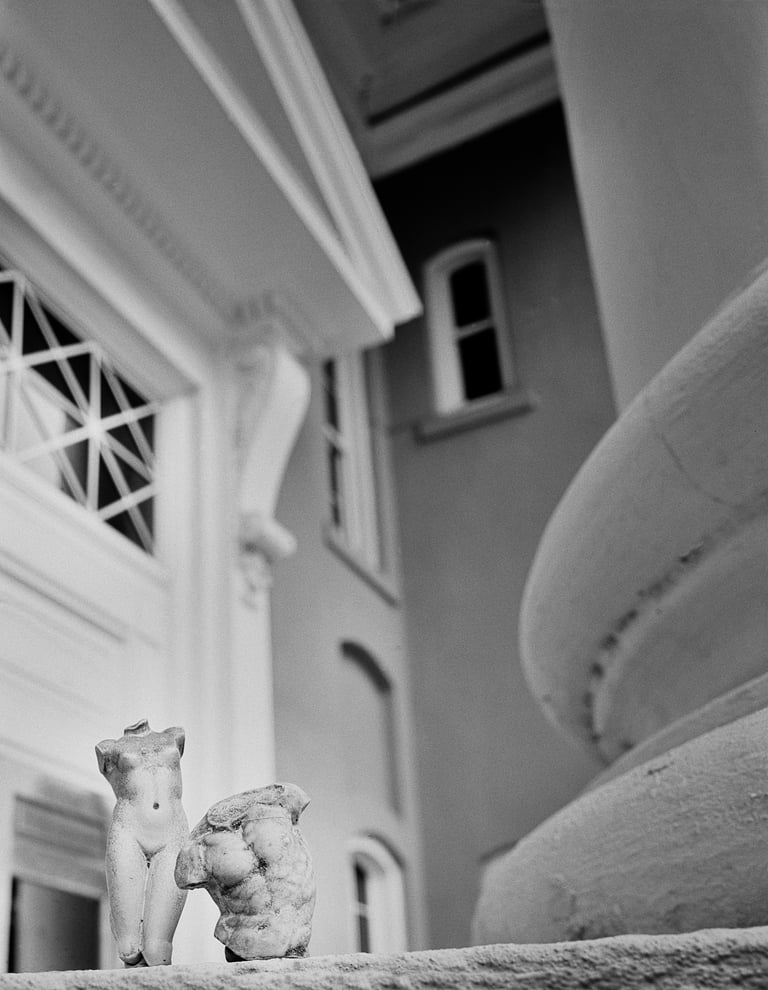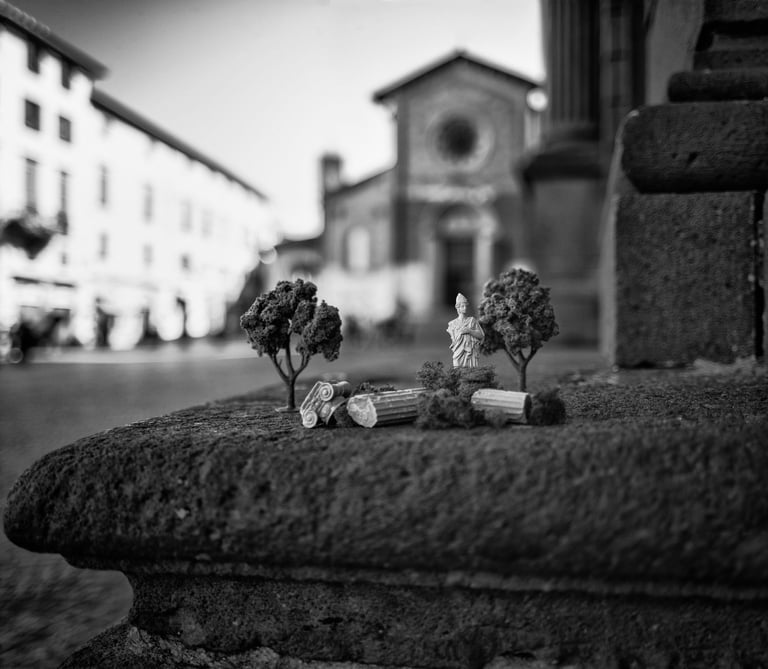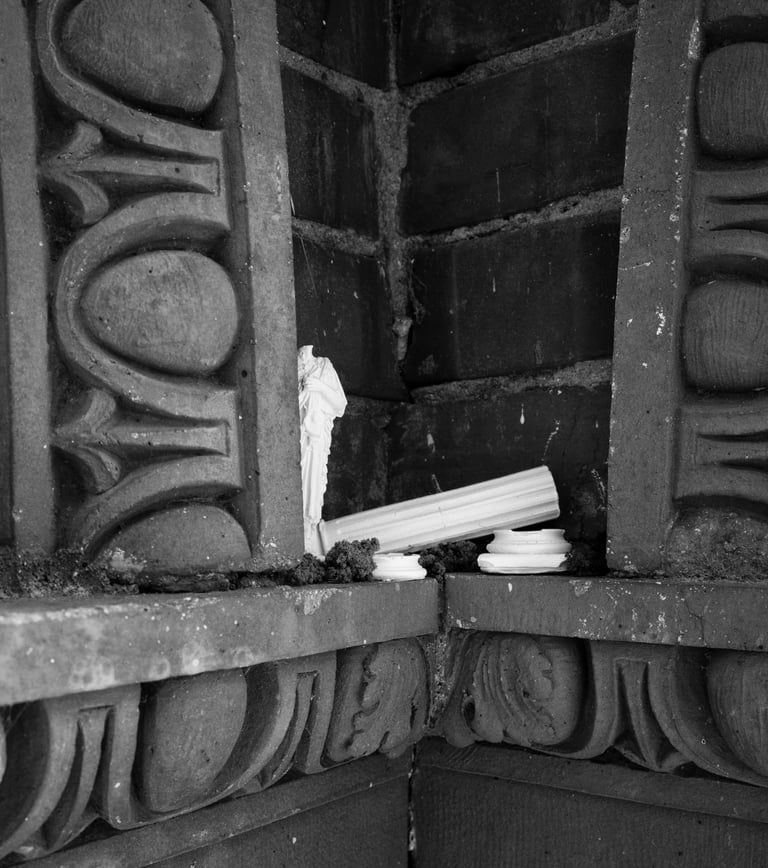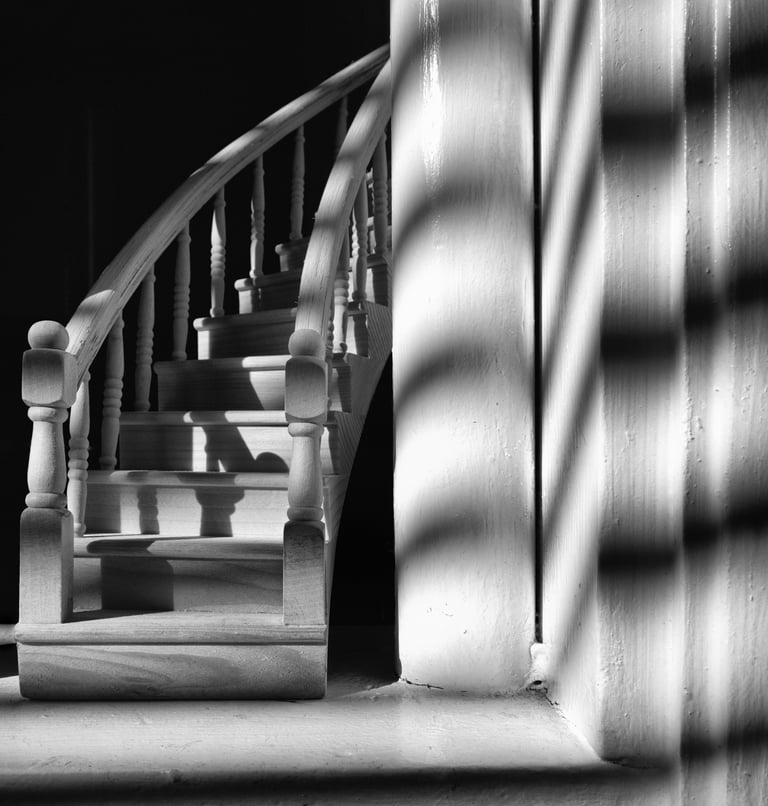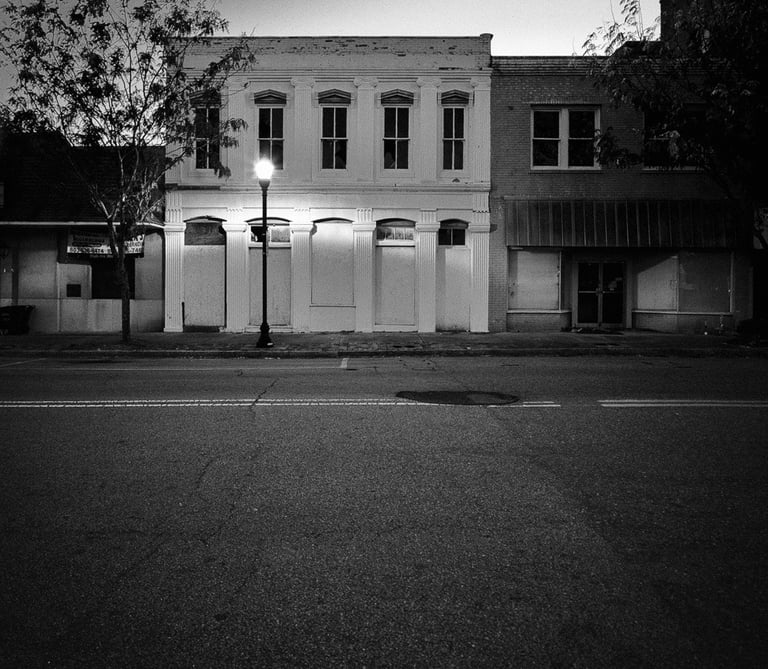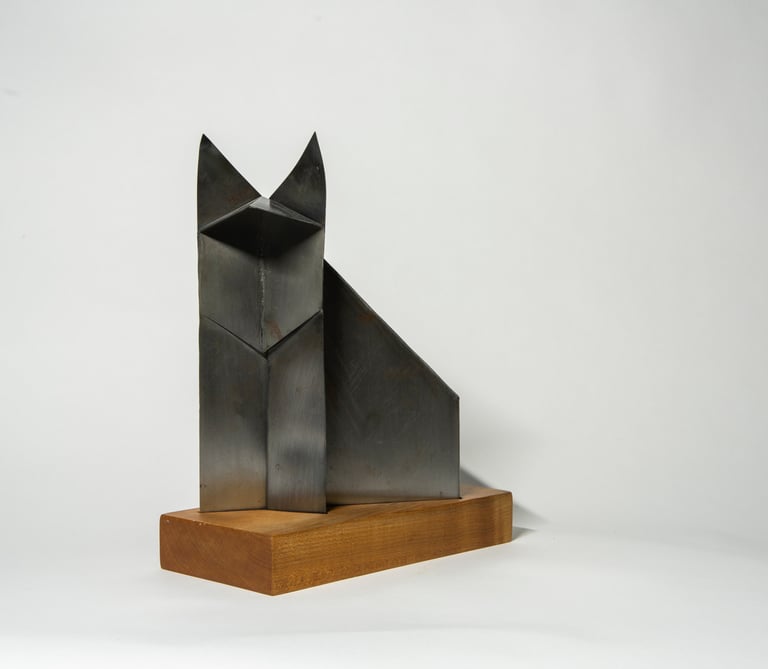Miniature Projects
This series of photographs is a journey through ordinary space, miniatures, and dreams, inviting viewers to contemplate ideas of place, belonging, and the constructed nature of our cultural narratives. The photographs that comprise Imaginary Landscapes span over a decade of work and represent a growing world of miniatures set against the spaces in which Giordano Angeletti has lived. The series began as images of dollhouse miniatures (doors, stairs, and windows) set against Southern vernacular architecture, while he was living in Savannah, Georgia. Giordano set these playthings in ordinary spaces so that the viewer can allow their imagination to take hold. The viewers can choose to step into a world where they have just drunk from Alice’s bottle, or a world inhabited by Lilliputians hiding in the corners of ordinary spaces. These images are little reveries, opportunities for daydreaming. These images refer to ideas of place, belonging, refuge, escape, and fantasy. Fantasies of places created when Giordano was longing to find a place where he could belong. Places that never were. Illusions that he hoped could become real.
As the body of images has grown, Giordano has searched for fresh places to explore. New lands for my miniatures to colonize with different architectural symbols and elements. The images have escaped the confines of the home. The doors and windows have given way to columns and famous classical sculptures. These “classical ruins” are a disenchanted recognition that western cultures use Greco-Roman archetypes to lay claim on those roots of civilization. While traveling back to Italy, he set these “ruins” against Romanesque, Gothic, and Baroque architecture. Each of these historical styles appropriated in some fashion classical elements to further their claim to their classical pedigree. In South Carolina, these images became a way for Giordano to reflect on how much we claim our link to classical heritage through institutional buildings. Neoclassical and later interpretations of these styles litter so much of our seats of power. Court houses, state houses, libraries, and so many university buildings use columns, lintels, and tympanums inspired by ancient Rome and Greece. We lean into that European heritage, much to the detriment of so many other cultures that have contributed to modern culture.



